Raúl Castro turned over Cuba’s presidency Thursday to a 57-year-old successor he said would hold power until 2031, a plan that would place the state the Castro brothers founded and ruled for 60 years in the hands of a Communist Party official little known to most on the island.
Castro’s 90-minute valedictory speech offered his first clear vision for the nation’s future power structure under new President Miguel Mario Díaz-Canel Bermúdez.
Castro said he foresees the white-haired electronics engineer serving two five-year terms as leader of the Cuban government, and taking the helm of the Communist Party, the country’s ultimate authority, when Castro leaves the powerful position in 2021.
“From that point on, I will be just another soldier defending this revolution,” Castro said. The 86-year-old general broke frequently from his prepared remarks to joke and banter with officials on the dais in the National Assembly, saying he looked forward to having more time to travel the country.
In his own half-hour speech to the nation, Díaz-Canel pledged to preserve Cuba’s communist system while gradually reforming the economy and making the government more responsive to the people.
“There’s no space here for a transition that ignores or destroys the legacy of so many years of struggle,” Díaz-Canel said. “For us, it’s totally clear that only the Communist Party of Cuba, the guiding force of society and the state, guarantees the unity of the nation of Cuba.”
Díaz-Canel said he would work to implement a longterm plan laid out by the National Assembly and Communist Party that would continue allowing the limited growth of private enterprises like restaurants and taxis, while leaving the economy’s most important sectors such as energy, mining, telecommunications, medical services and rum- and cigar-production in the hands of the state.
“The people have given this assembly the mandate to provide continuity to the Cuban Revolution during a crucial, historic moment that will be defined by all that we achieve in the advance of the modernisation of our social and economic model,” Díaz-Canel said.
EXPECTATIONS
Cubans said they expected their new president to deliver improvements to the island’s economy, which remains stagnant and dominated by inefficient, unproductive state-run enterprises that are unable to provide salaries high enough to cover basic needs.
The average monthly pay for state workers is roughly US$30 a month, forcing many to steal from their workplaces and depend on remittances from relatives abroad.
“I hope that Díaz-Canel brings prosperity,” said Richard Pérez, a souvenir salesman in Old Havana. “I want to see changes, above all economic changes allowing people to have their own businesses, without the state in charge of so many things.”
In Miami, Cuban-US citizens said they didn’t expect much from Díaz-Canel .
“It’s a cosmetic change,” said Wilfredo Allen, a 66-year-old lawyer who left Cuba two years after the Castros’ 1959 revolution. “The reality is that Raul Castro is still controlling the Communist Party. We are very far from having a democratic Cuba.”
After formally taking over from his older brother Fidel in 2008, Raúl Castro launched a series of reforms that led to a rapid expansion of Cuba’s private sector and burgeoning use of mobile phones and the Internet. Cuba today has a vibrant real-estate market and one of the world’s fastest-growing airports. Tourism numbers have more than doubled since Castro and former US president Barack Obama re-established diplomatic relations in 2015, making Cuba a destination for nearly five million visitors a year, despite a plunge in relations under the current Donald Trump administration.
Castro’s moves to open the economy even further have largely been frozen or reversed as soon as they began to generate conspicuous displays of wealth by the new entrepreneurial class in a country officially dedicated to equality among its citizens. Foreign investment remains anaemic and the island’s infrastructure is falling deeper into disrepair.
The election of President Donald Trump dashed dreams of detente with the US, and after two decades of getting Venezuelan subsidies totalling more than US$6 billion a year, Cuba’s patron has collapsed economically, with no replacement in the wings.
Castro’s inability or unwillingness to fix Cuba’s structural problems with deep and wide-ranging reforms has many wondering how a successor without Castro’s founding- father credentials will manage the country over the next five or 10 years.
“I want the country to advance,” said Susel Calzado, a 61-year-old economics professor. “We already have a plan laid out.”
LOW PROFILE
Most Cubans have known their new president as an uncharismatic figure who until recently maintained a public profile so low it was virtually non-existent. Castro’s declaration Thursday that he saw Díaz-Canel in power for more than a decade was likely to resolve much of the uncertainty about the power the new president would wield inside the Cuban system.
“The same thing we’re doing with him, he’ll have to do with his successor,” Castro said. “When his 10 years of service as president of the Council of State and Council of Ministers are over, he’ll have three years as first secretary in order to facilitate the transition. This will help us avoid mistakes by his successor, until [Díaz-Canel] retires to take care of the grandchildren he will have then, if he doesn’t have them already, or his great-grandchildren.” Cuban state media said Russian President Vladimir Putin congratulated Díaz-Canel and thanked Castro for the many years of cooperation between the two countries, while Chinese President Xi Jinping also reaffirmed his country’s friendship with Cuba and expressed interest in deeper ties.
At the US State Department, spokeswoman Heather Nauer expressed disappointment at the handover, saying Cuban citizens “had no real power to affect the outcome” of what she called the “undemocratic transition” that brought Díaz- Canel to the presidency.
US Vice-President Mike Pence tweeted at Castro that the US won’t rest until Cuba “has free and fair elections, political prisoners are released and the people of Cuba are finally free!”
Diaz-Canel said his government would be willing to talk with the United States but rejected all demands for changes in the Cuban system.
DEFER
With Castro watching from the audience, Díaz-Canel made clear that for the moment he would defer to the man who founded the Cuban Communist system along with his brother Fidel. He said he would retain Castro’s Cabinet through at least July, when the National Assembly meets again.
“I confirm to this assembly that Raúl Castro, as first secretary of the Communist Party, will lead the decisions about the future of the country,” Díaz- Canel said. “Cuba needs him, providing ideas and proposals for the revolutionary cause, orienting and alerting us about any error or deficiency, teaching us, and always ready to confront imperialism.”
Díaz-Canel first gained prominence in central Villa Clara province as the top Communist Party official, a post equivalent to governor. People there describe him as a hard-working, modest- living technocrat dedicated to improving public services. He became higher education minister in 2009 before moving into the vice-presidency.
In a video of a Communist Party meeting that inexplicably leaked to the public last year, Díaz-Canel expressed a series of orthodox positions that included sombrely pledging to shutter some independent media and labelling some European embassies as outposts of foreign subversion.
But he has also defended academics and bloggers who became targets of hard-liners, leading some to describe him a potential advocate for greater openness in a system intolerant of virtually any criticism or dissent. International observers and Cubans alike will be scrutinising every move he makes in coming days and weeks.
As in Cuba’s legislative elections, all of the leaders selected Wednesday were picked by a government-appointed commission. Ballots offered only the option of approval or disapproval and candidates generally receive more than 95 percent of the votes in their favour. Díaz-Canel was approved by 604 votes in the 605-member assembly. It was unclear if he had abstained or someone else had declined to endorse him.
The assembly also approved another six vice-presidents of the Council of State, Cuba’s highest government body. Only one, 85-year-old Ramiro Valdés, was among the revolutionaries who fought with the Castros in the late 1950s in the eastern Sierra Maestra mountains.
The Castros’ Cuba: six decades of power
The departure of Cuba’s President Raúl Castro brings to an end his family’s six-decade grip on power, which began with his late brother and revolutionary hero Fidel.
REVOLUTION
On New Year’s Day in 1959, dictator Fulgencio Batista flees Cuba, defeated by 26 months of guerrilla warfare spearheaded by the Castro brothers. Fidel declares victory in the southern city of Santiago de Cuba, pronouncing “The revolution begins now,” before heading to the capital. The regime begins its move toward Communism in May, enacting the first agrarian reform law to allow the expropriation of land.
US RUPTURE
In 1960, Cuba nationalises US companies in response to Washington’s decision to limit oil exports to the island and reduce imports of Cuban sugar. A year later, the United States breaks diplomatic relations with Cuba. And in 1962, Washington cuts off most trade with the island.
BAY OF PIGS
In April 1961, around 1,400 anti- Castro Cubans – trained and financed by the CIA – land at the Bay of Pigs with the intention of overthrowing the Communist regime. It ends in failure.
SOCIALISM
Castro proclaims the socialist character of the Cuban revolution on April 16, 1961. In a speech on May 1, he declares the regime has adopted a socialist system and has “no time for elections.”
In 1965, the Communist Party of Cuba is created, which has ruled the island ever since.
MISSILE CRISIS
In October,1962, the United States identifies facilities for Soviet Union nuclear missiles installed on Cuba. For a fortnight, the world is gripped by fears of nuclear war between the two superpowers until negotiations bring an end to the Cuban Missile Crisis.
DEATH OF ‘CHE’
A hero of the Cuban revolution and brother-in-arms to the Castros, Argentina’s Ernesto “Che” Guevara is executed by the Bolivian Army in 1967. His death brings an end to a scheme to spread the Cuban revolution across Latin America, starting with Bolivia.
SOVIET SPHERE
In 1970, Cuba fails to meet its promised objective of a harvest of 10 million tonnes of sugar which the Soviet Union is buying at preferential prices. It becomes indebted to the Soviet Union, increasingly moving under its influence and going on to join the Communist trading bloc COMECON in 1972.
TROOPS TO ANGOLA
Starting in 1975, Cuba sends troops to Angola to support the first post-independence government of the Communist MPLA party in a civil war against the US-backed UNITA movement. Thousands of Cuban troops are deployed as part of the operation, which runs for 16 years, and extends to conflicts in Ethiopia and elsewhere in Africa.
FIDEL CASTRO DIES
On July 31, 2006 an unwell Fidel provisionally hands power to his younger brother Raúl, until then his number two in government. Raúl officially becomes president in 2008 and undertakes a slow programme of reforms to “update” the Soviet economic model that is on its last legs. Fidel dies on November 25, 2016, aged 90.
THAW WITH WASHINGTON
In December 2014, then-US president Barack Obama and Raúl Castro announce plans to normalise US-Cuba ties after 53 years of hostilities. The process comes to fruition the following year. The thaw is later slowed by the arrival of Donald Trump in the White House in 2017. – TIMES/AFP












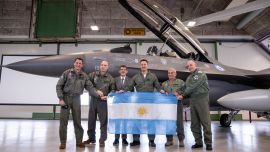
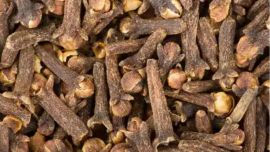
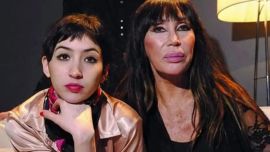







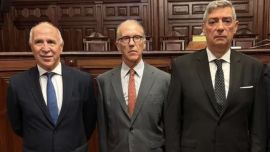

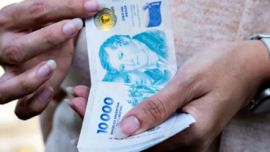
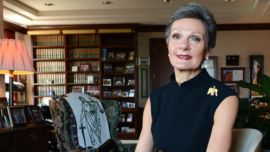
Comments